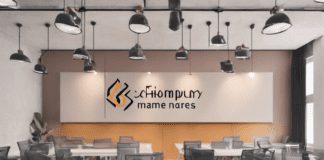Recessed light or commonly called pot lights got popular over the last decade for a number of reasons and rightly so as being the most versatile form of lighting when it comes to interiors or closed spaces. Their ability to blend seamlessly with the surroundings and providing illumination in almost all spaces be it inside the house or outside. Some being waterproof can also be used in pools or decor designs including water bodies.
Recessed lighting fixtures are popular among architects and lighting designers because they integrate quickly into ceilings and serve the purpose be it practical illumination or setting up a themed space for any artistic statement.
However you decide to decorate your house, lighting certainly does not just serve the purpose of illumination but is an important factor in bringing a feel and setting up a tone to your environment. When you know your space you can most definitely control the light and set it up according to your aesthetic.
Recessed lighting fixtures provide 4 general kinds of lighting i.e
- Downlighting: for general illumination, centered over horizontal surfaces, there is uniform or non-uniform downlighting Illuminating architectural details or to facilitate tasks.
- Accent/mood lighting: supplement lighting from other fixtures to enhance or highlight architectural or art pieces and adds to the dramatic feel of the room. Can also be used inside cabinets for the same purpose.
- Grazing: adds shadow and contrast to any wall surface
- Wall washing: casting a good amount of light on vertical surfaces from ceiling to floor of a certain area to make it appear spacious.
They are engineered to integrate into both standard or sloped ceilings, minimal spacing and serve well when used according to design based features.
A usual recessed light fixture includes several parts such as:
Housing: main structure of light which is fixed inside the ceiling and holds all the necessary electrical components.
Trim: decorative part which aids to the appearance of the fixture. It covers the opening of light
Frame: part of trim or placed over it also for decorative purposes.
Bulb: directional or diffused. The bulb used impacts the efficiency of the lighting scheme. Replaceable part. Available categories are LED, Fluorescent, Incandescent and halogen.
Retro-fit kits: to update old fixtures, they just replace the existing trim and screwed inside the bulb socket with the help of holders.
Knowing the technical details saves you the cost once you upgrade. Recessed lights serves best when some important factors are taken into consideration such as:
Placement: placed at a certain distance from each other according to the height of your ceiling. Usually 4’ to 6’ fixtures are used. For the purpose of illumination they are used in grids.
Dimmer: most Incandescent and LED recessed lighting is compatible with dimmers, they help add ambiance to the environment and are economic.
Insulated Housing: to avoid overheating of ceilings by not letting the heat escape through fixtures. It is a critical factor.
Nowadays, LED recessed lighting is popular because it is versatile and economical allowing the consumer to choose from LED replacement bulbs, retrofit designs and dedicated housings. They help save the cost of wiring and are upto 80% more efficient than other bulb options as they cut down electricity usage and produce less heat so no overheating of the ceilings. They have the lowest maintenance cost and are not mercury based so are easily disposable.
Recessed lighting is efficient because it uses zero visual space and in fact adds value to the surrounding in general or when layered with other lighting options. It’s a one time upgrade which has lowest maintenance cost and if the installation is planned efficiently serves the long term goal of illumination and stylish decor.











